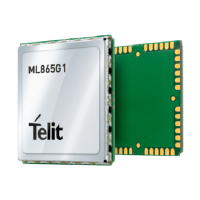AT#FTPOPEN="IP",username,password
OK
AT#FTPPUT=<filename>,1
OK
the second param (1) means that we open the connection in command mode
Here data socket will stay opened, but interface will be available (command mode)
AT#FTPAPPEXT=Size
>binary data
#FTPAPPEXT: <sentBytes>
OK
write here the binary data. As soon Size bytes are written, data are sent and OK is returned
Last #FTPAPPEXT will close the data socket, because second (optional) parameter has this
meaning:
AT#FTPAPPEXT=Size,1
>binary data
#FTPAPPEXT: <sentBytes>
OK
write here the binary data. As soon Size bytes are written, data are sent and OK is returned
and the data socket is closed.
If the user has to reopen the data port to send another (or append to the same) file, they can
restart with #FTPPUT (or #FTPAPP).
Then #FTPAPPEXT to send the data chunks on the reopened data port.
If, while sending the chunks, the data port is closed from remote, user will be aware of it
because #FTPAPPEXT will indicate ERROR and cause (available if previously issued the
command AT+CMEE=2) will indicate that socket has been closed.
Also in this case obviously, data port will have to be reopened with #FTPPUT and the related
commands.

